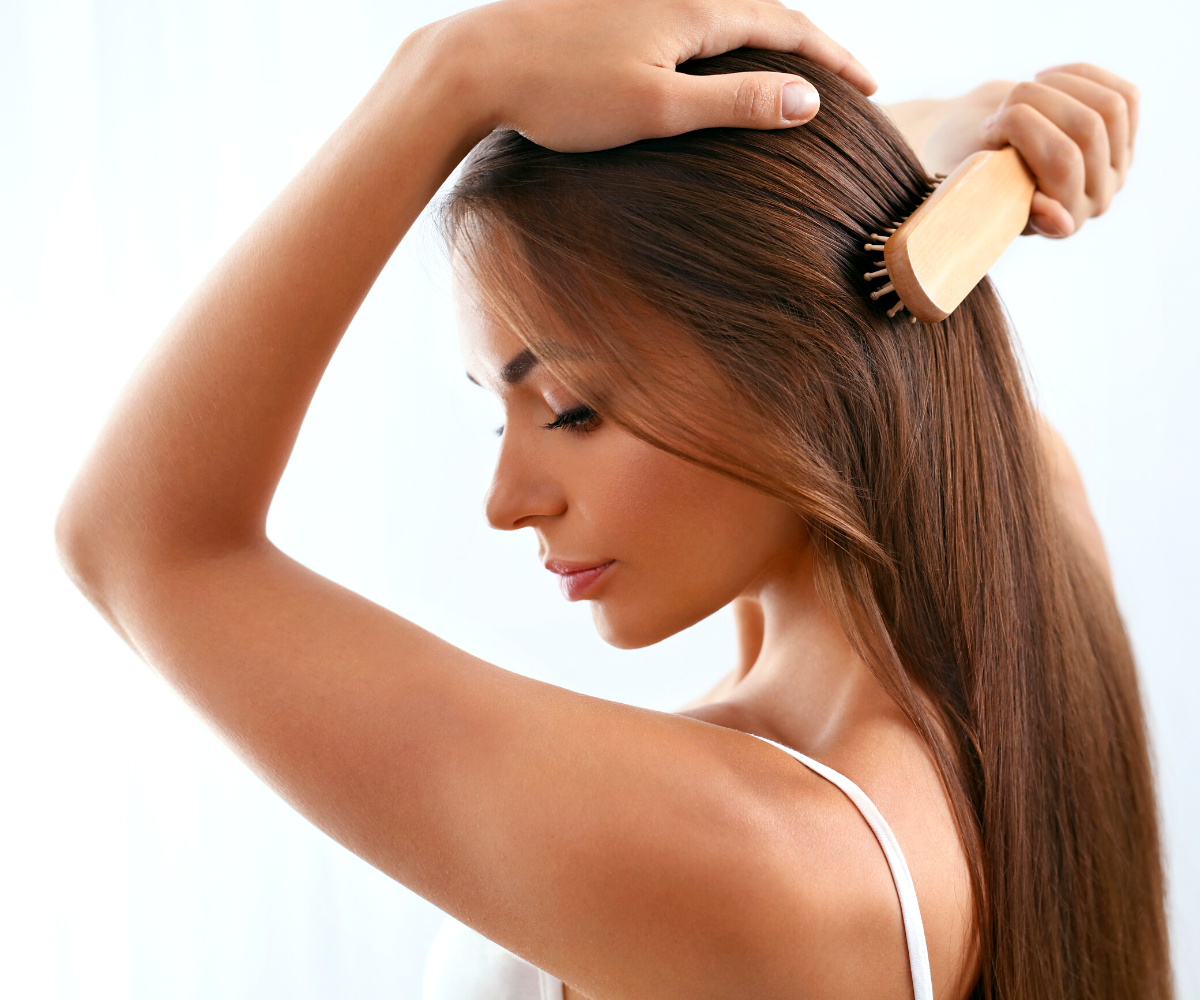
Does Estradiol Cause Hair Loss?

Low Estrogen levels can contribute to hair loss in women with androgenic alopecia.
Androgenic alopecia is caused by a genetic sensitivity to a hormone called DHT. When Testosterone and Estrogen are out of balance, it can affect DHT levels and lead to hair loss.
The ratio of Estradiol (a form of Estrogen) to free Testosterone is believed to play a role in triggering androgenic hair loss. Menopause is the leading cause of low Estrogen in women, and it can upset this balance between hormones.
Perimenopause, pregnancy, medications and other factors can also contribute to hormone imbalance.
Hormone fluctuations during menstrual cycles are normal, but consistently low Estrogen levels may indicate an underlying issue or the natural aging process.
Treatment options for low Estrogen-related hair loss include medication to boost Estrogen levels and hair loss treatments designed to improve hair growth.
Hormone Replacement Therapy (HRT) is often recommended for persistent low Estrogen levels.
HRT may contribute to hair loss at first while patients work with their doctor to find the right dosages, but once patients optimize their hormones, hair loss symptoms typically ease.
How Does DHT Impact the Hair Cycle and Hair Follicles?
The growth cycle for hair typically last around two to six years.
If you have a DHT sensitivity, high levels of DHT can cause your hair follicles to shrink as well as reduce the length of their growth cycle. This effect can make hair look thinner and more brittle, and it also causes hair to fall out faster.
If hair follicles continue to shrink, they lose their ability to produce more hair, which leads to permanent baldness.
What is the Hair Growth Cycle?
The hair growth cycle consists of four phases: anagen, catagen, telogen, and exogen.
1. Anagen Phase: This is the active growth phase of the hair follicle, lasting up to eight years for scalp hair. The length of this phase determines the length of our hair. As we age, the duration of anagen phase decreases, resulting in weaker and thinner hair over time.
2. Catagen Phase: A transitional period between anagen and telogen, lasting about two weeks. Hair follicles detach from the dermal papilla during this phase, potentially leading to hair loss.
3. Telogen Phase: A resting period lasting two to three months, during which new hair develops at the base and old hair is shed. Prematurely entering this phase can result in excessive shedding and thinning (telogen effluvium).
4. Exogen Phase: Marks the termination of telogen and initiation of anagen. New hair continues to grow while old hair is shed.
Various factors affect these phases and overall hair growth, such as inflammation, hormones, stress, nutrition, poor sleep, and medications.
Understanding the hair growth cycle is essential for addressing hair-related issues like promoting growth or managing excessive shedding.
Will Estradiol Help With Hair Loss?
Estradiol, a form of Estrogen, can potentially help with hair loss in women experiencing conditions like female pattern hair loss or androgenetic alopecia. Estradiol is a natural form of Estrogen in the body, and it’s also the form typically administered in Hormone Replacement Therapy.
Research suggests that managing Estrogen levels could play a role in addressing this type of hair loss, since a decreased Estrogen to Testosterone ratio may contribute to the condition.
Treating Estrogen-related hair loss is complex, and it’s important to consult a healthcare provider for proper diagnosis and guidance.
Treatment options for Estrogen-related hair loss vary and may include medication to boost Estrogen. Hormone Replacement Therapy (HRT) can be prescribed to replace naturally produced hormones like Estrogen and Progesterone.
HRT can be administered through different methods such as injections, creams and patches, and implantable pellets.
How Do Hormones Impact Hair Growth?
Hormones such as Estrogen, Testosterone, and dihydrotestosterone (DHT) play a significant role in hair growth.
Estrogen, specifically Estradiol, can protect against hair loss by influencing the conversion of androgens into Estrogen. Testosterone converts into DHT, and the latter can trigger androgenic alopecia in men and women.
Melatonin, another hormone, regulates physiological functions and affects hair pigmentation and the growth phase of hair.
Understanding how hormones impact hair growth is crucial for addressing and managing hair loss.

Does a Testosterone Deficiency Cause Hair Loss in Women?
Female pattern hair loss, also known as androgenic alopecia, is believed to be linked to an excessive response to androgens like DHT. While Testosterone deficiency is not considered a known cause of hair loss in women, changes in hormone levels do contribute to hair loss.
Because Testosterone, Estrogen, and other hormones are so intertwined, a deficiency in one area can lead to a cascading effect in other areas. Thus, women who experience a Testosterone deficiency may experience hair loss.
What Other Medications Help with Hair Loss?
There are many treatments designed to slow hair thinning. These medications include:
- Minoxidil — A medication available without a prescription that has been known to help hair grow. It works by improving the circulation of blood in your scalp, which can be beneficial if you start losing hair at an early stage. Generally, it is safe and may even work on its own.
- Latanaprost — This mediation was found to have a positive effect on hair growth in young men with mild thinning. It works by mimicking prostaglandins and resulted in an increase of hair density over the course of 24 weeks.
- Ketoconazole — Typically used as an antifungal cream, this medication has been found to possibly help reduce the effects of DHT on the scalp.
- Spironolactone —This medication can be taken orally or applied topically. It is usually prescribed to reduce water retention, but it may also help with female pattern baldness caused by too much Testosterone and other androgens produced in the ovaries and adrenal glands.
- Azelaic Acid — This is a natural antibiotic that may help reduce the amount of DHT in the body. Azelaic acid has been studied for its ability to block an enzyme called 5-alpha-reductase, which can affect hair growth.

HRT and Hair Loss Treatment at Defy Medical
Hormone deficiencies in women can cause hair loss and hair thinning. HRT is a potential solution that can bring the body back into balance to reduce hormone-related hair loss.
Each individual’s situation is unique, so treatment options will vary depending on the underlying cause of hair loss.
At Defy Medical, we strive to provide individualized care for each patient. Our team works together to identify the cause of your hair loss and create a personalized treatment plan that will help you reach your goals. This plan may include HRT as well as other medications designed to address the root cause of hair loss.
Defy Medical offers telemedicine consultations, an online portal, and medications delivered right to you if prescribed.
Ready to learn more?
Get Started

